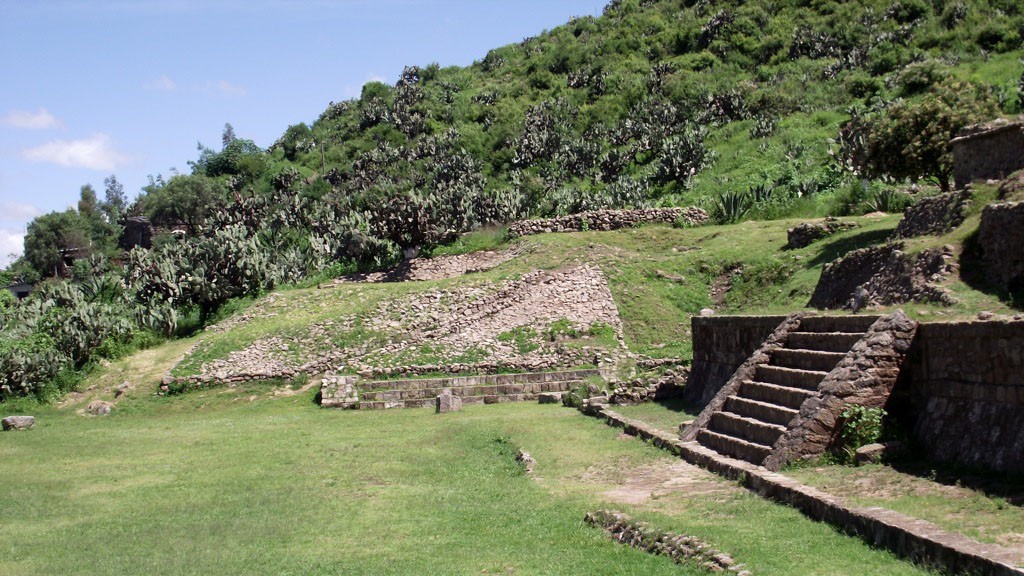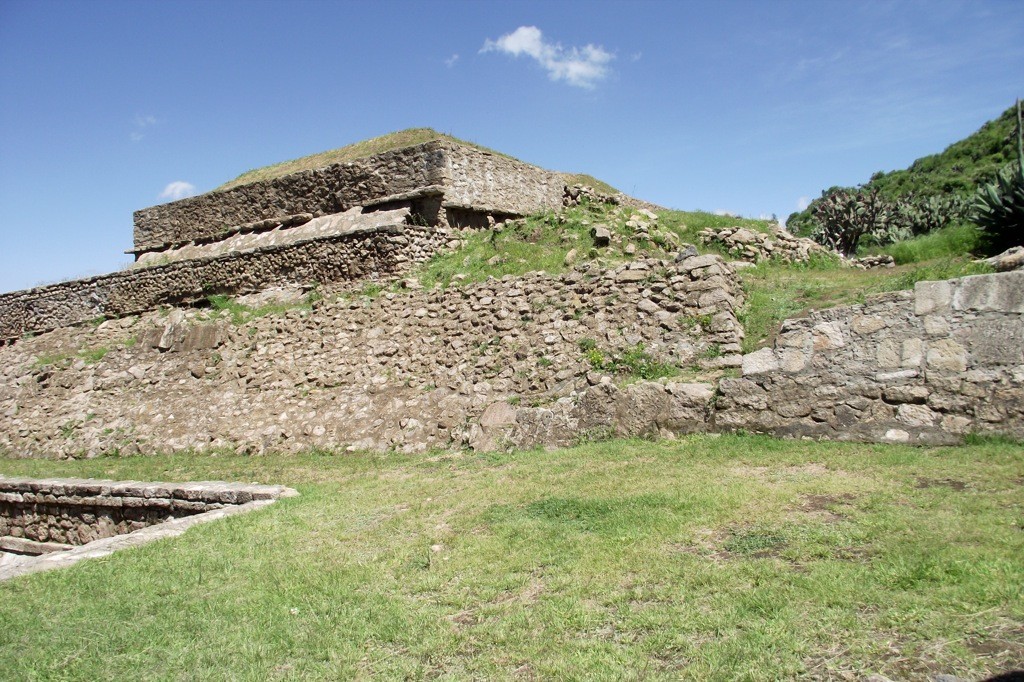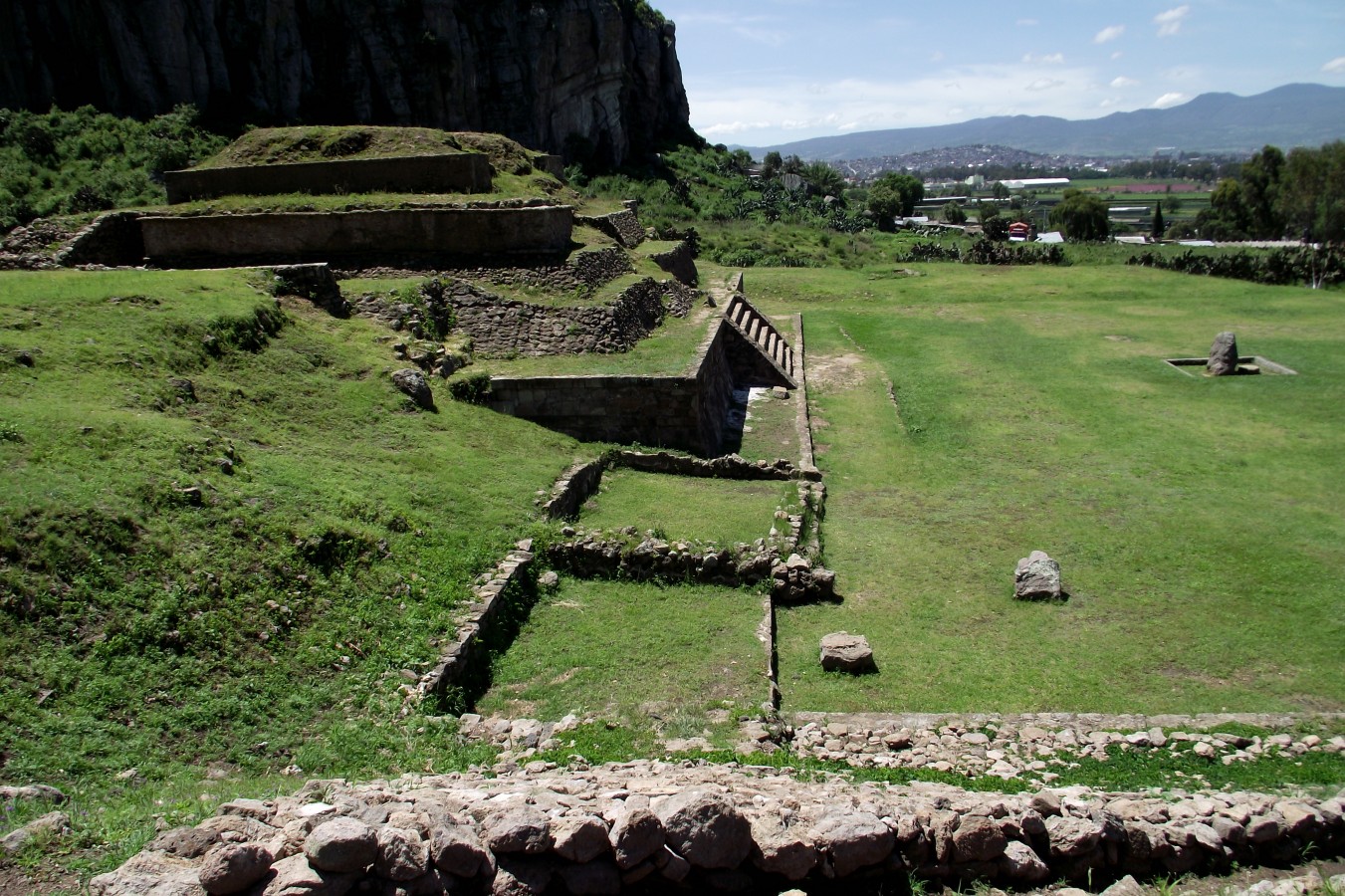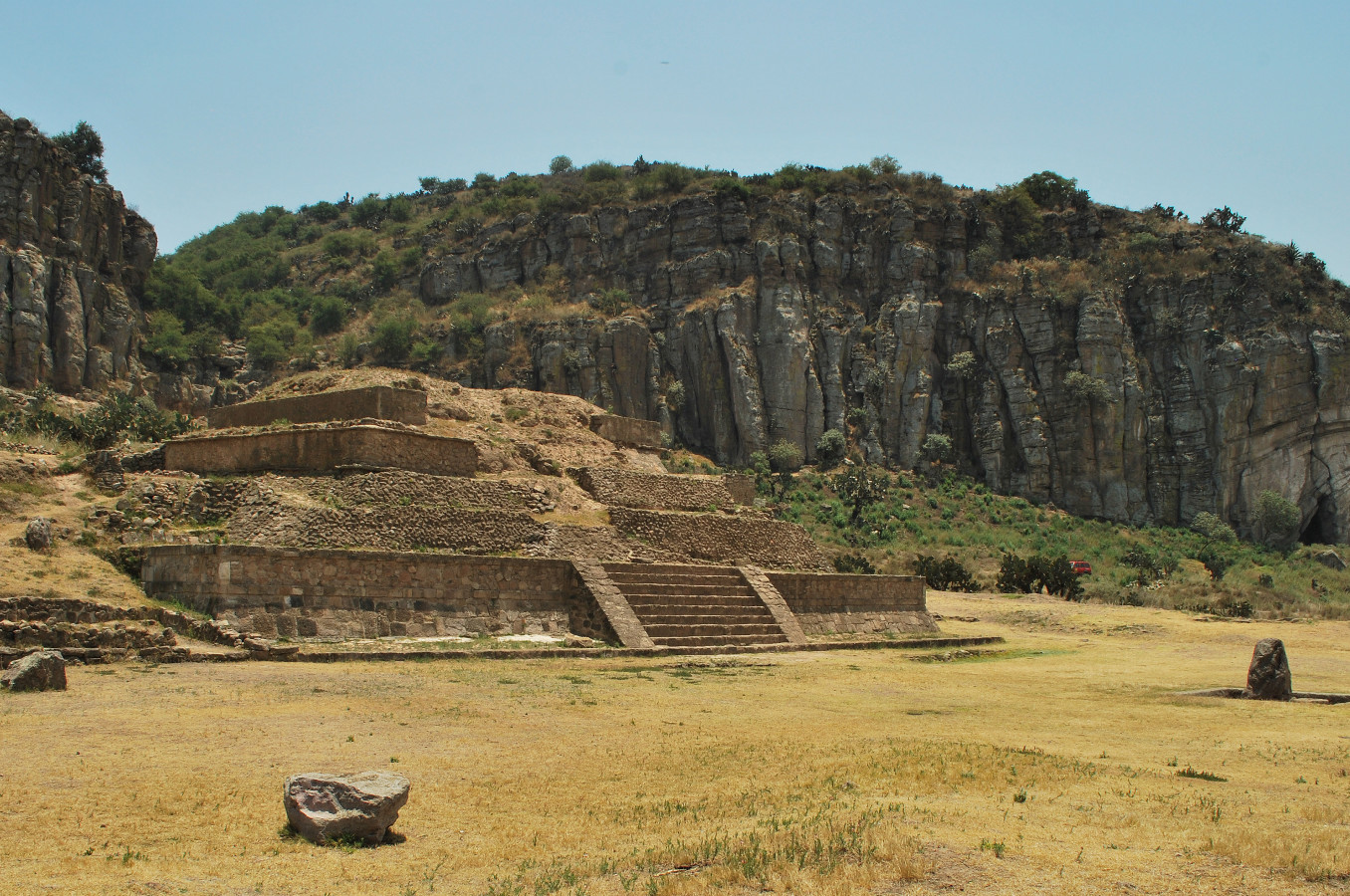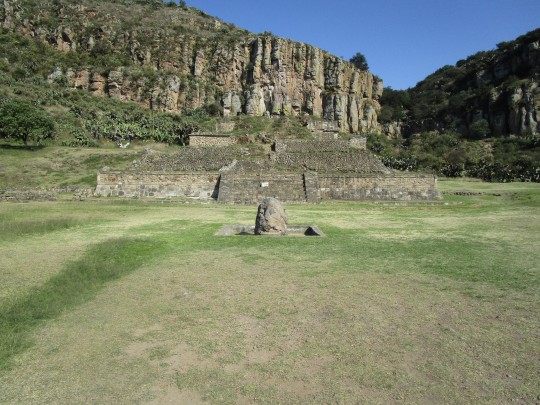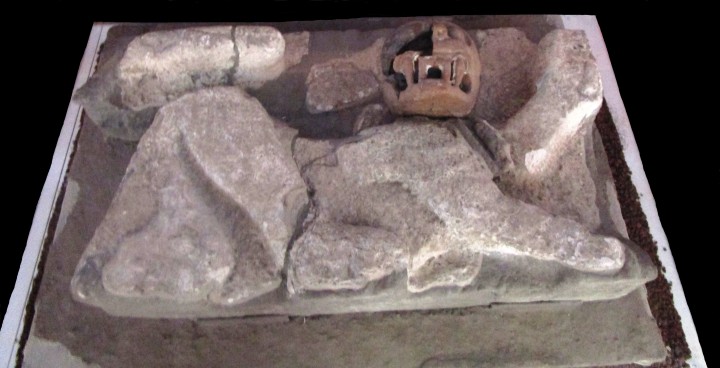The site of Huapalcalco, the most important archeological zone in the valley of Tulancingo, had five stages of inhabitation. The earliest dates back to prehistoric times, and specifically to the early Neolithic period. Important finds include the Meserve-type projectile points and a hand-axe dated to around 7000 BC, as well as cave paintings on the outcrops of the Mesa and Tecolote hills.
The second phase of occupation can be seen in a group of houses dated to the Late Preclassic, while the third consists of a settlement represented by Structure VI, with similar architecture to that found in Teotihuacan. The monuments and ceramic artefacts from the Epiclassic period (650 to 900 AD) could represent the forerunners of the Toltec culture. Here we can glimpse the first historical indications of Ce Acatl Topiltzin Quetzalcoatl, the celebrated priest of the “Plumed Serpent” god, who was to become the most powerful ruler of Tula, the Toltec capital.
The site’s importance is clearly evident given the extraction of obsidian from the El Pizarrín mountain range and also because it was a regional center that functioned as a waypoint between the Valley of Mexico and the highland Huasteca region.
The fourth phase of inhabitation corresponds to the Late Postclassic, a time characterized by the use ceramic materials of the third and fourth Aztec periods in the Valley of Mexico. Some of the most interesting objects found at the site include yokes of Totonac origin and a sculpture of the Old God of Fire.
- Brigitte Boehm de Lamieras, a researcher who has studied the origin of the State in Mesoamerica, has proposed that the origins of the Toltec state can be traced back to Huapalcalco.
- The culture of those who built Huapalcalco has not been definitively confirmed, but the period has been identified as coming after Teotihuacan and before the Toltec civilization.
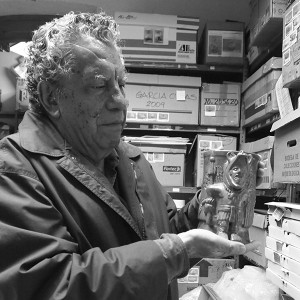
-
+52 (771) 714 39 89; +52 (771) 714 35 20
-
This email address is being protected from spambots. You need JavaScript enabled to view it.
-
WWW

